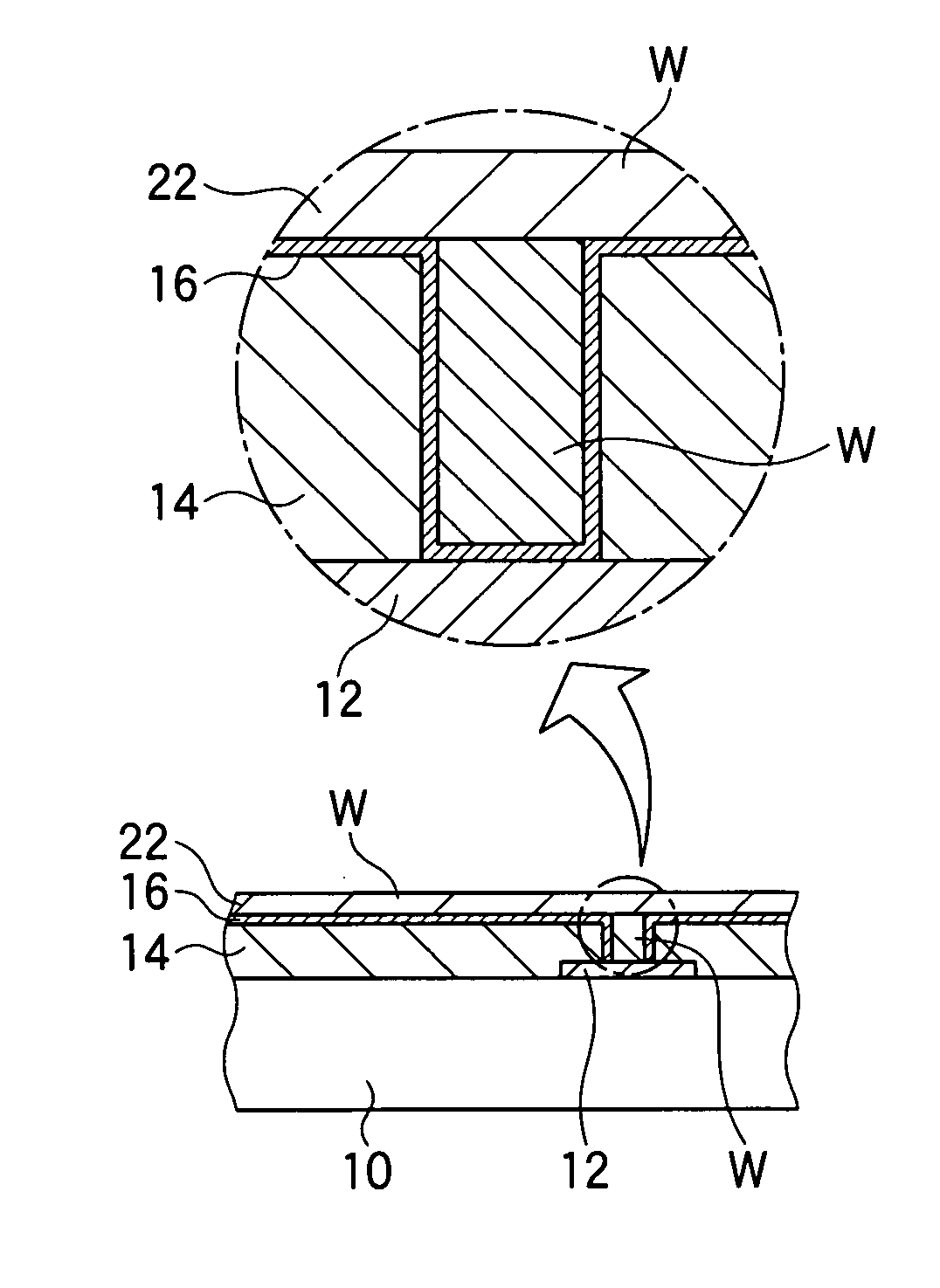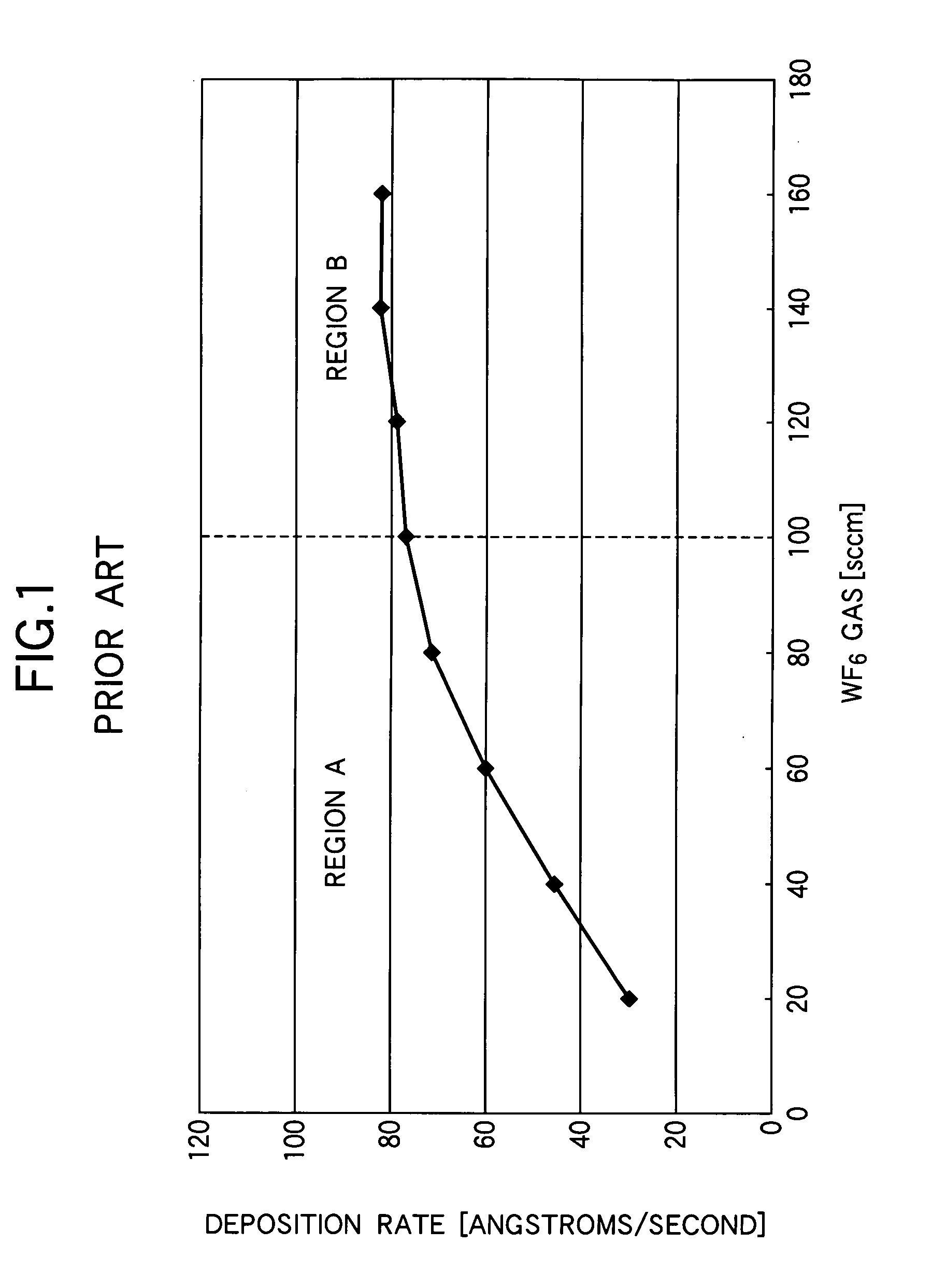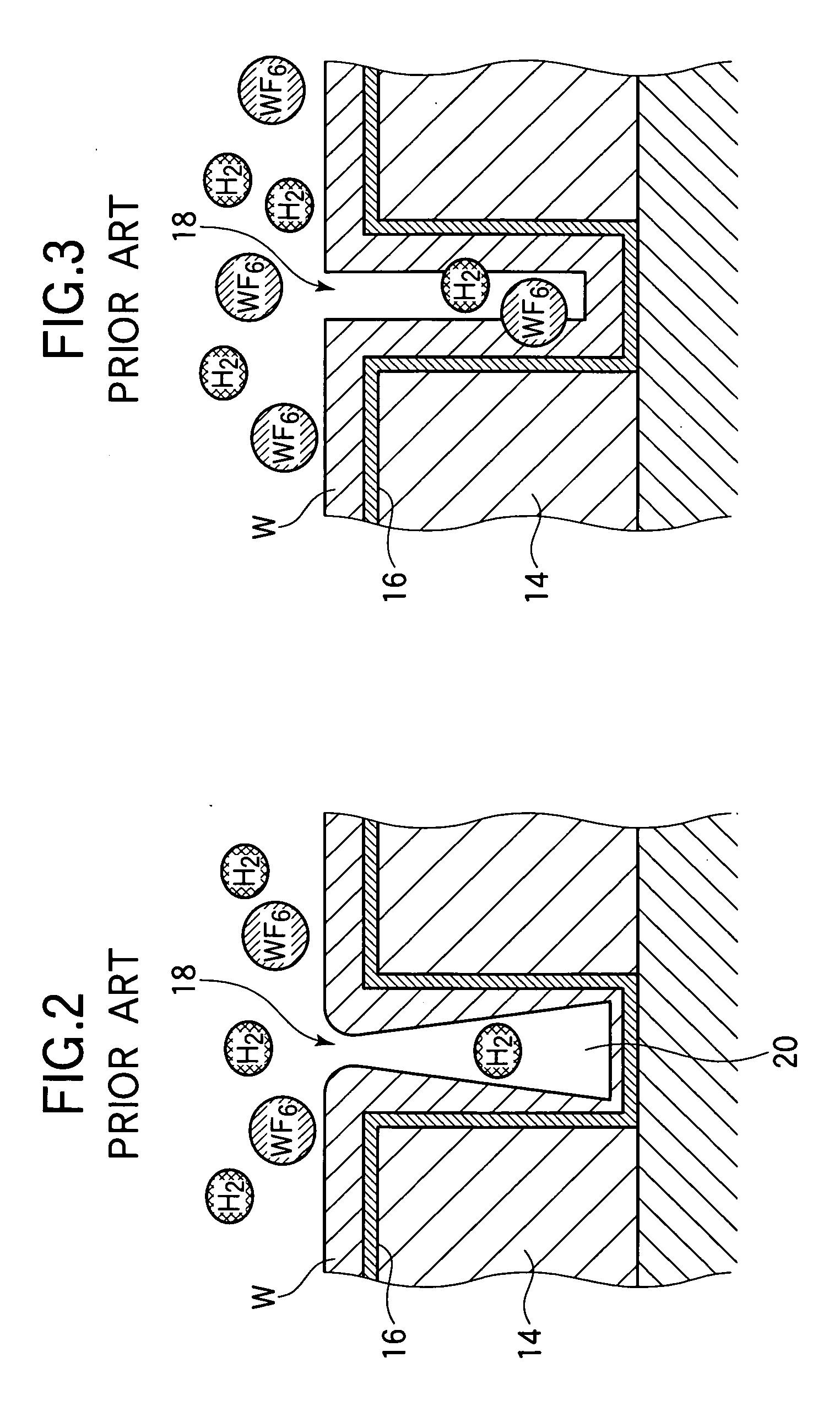Method of manufacturing a semiconductor device
a manufacturing method and semiconductor technology, applied in semiconductor devices, semiconductor/solid-state device details, electrical devices, etc., can solve the problems of unwanted effect, unwanted etching, and increase the tendency of voids to form, and achieve the effect of simple and inexpensive new process
- Summary
- Abstract
- Description
- Claims
- Application Information
AI Technical Summary
Benefits of technology
Problems solved by technology
Method used
Image
Examples
first embodiment
[0023]Referring to FIG. 4, the method of forming a semiconductor device according to the first embodiment begins from a semiconductor substrate 10 on which semiconductor circuit elements (not shown) and interconnection wiring 12, electrically coupled to the semiconductor circuit elements, are formed. A dielectric film 14 such as a layer of silicon oxide or a layer of borophosphosilicate glass (BPSG) is then formed, covering the interconnection wiring 12, and is selectively etched by photolithography and reactive ion etching to form holes 18 extending from the surface of the dielectric film 14 down to the underlying wiring layer or circuit element. Next an adhesion layer such as a layer of titanium nitride (TiN) is formed on the surface of the dielectric film 14 and the inner side and bottom walls of each hole 18.
[0024]Although the illustrated hole 18 leads to interconnection wiring 12, the novel process may also be applied in other configurations: for example, the hole 18 may lead t...
second embodiment
[0041]The second embodiment includes the steps already shown in FIGS. 4 to 8, which fill a hole 18 formed in a dielectric film 14 with tungsten and form a tungsten layer on the surface of the dielectric film 14, and two further steps, which will be described below.
[0042]Referring to FIG. 9, the next step is a second etching step that etches the tungsten layer deposited on the surface of the dielectric film 14 in the second deposition step. This etching step removes substantially all of the tungsten from the surface of the dielectric film 14.
[0043]This second etching step is carried out in situ by halting the flow of hydrogen gas that was supplied during the second deposition step, reducing the WF6 gas flow to less than 100 sccm (region A), and using WF6 gas as an etching gas, without moving the semiconductor substrate 10 from the deposition chamber in which the first and second deposition steps were carried out. Exemplary conditions for this second etching step are a temperature of ...
PUM
 Login to View More
Login to View More Abstract
Description
Claims
Application Information
 Login to View More
Login to View More - R&D
- Intellectual Property
- Life Sciences
- Materials
- Tech Scout
- Unparalleled Data Quality
- Higher Quality Content
- 60% Fewer Hallucinations
Browse by: Latest US Patents, China's latest patents, Technical Efficacy Thesaurus, Application Domain, Technology Topic, Popular Technical Reports.
© 2025 PatSnap. All rights reserved.Legal|Privacy policy|Modern Slavery Act Transparency Statement|Sitemap|About US| Contact US: help@patsnap.com



